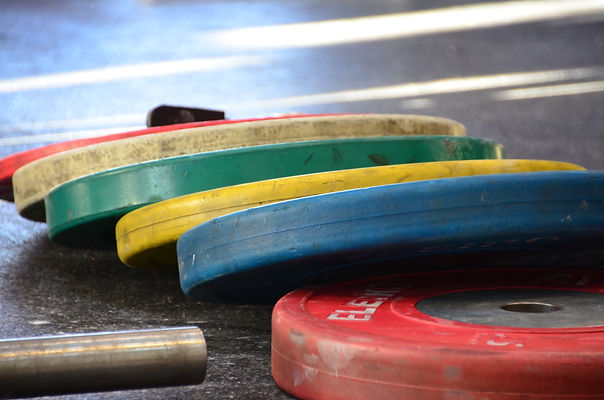Working With the Female Athlete: Part 2
- Dave McDowell
- Sep 28, 2015
- 4 min read
In part 1, we discussed the need for a structured strength and conditioning program in order to reduce the incidence of all injury. If you missed it you can find it [HERE]. With this piece we will attempt to explore specific training that has been used successfully in the minimization of ACL injuries in female populations. It should also be noted that many of these same techniques and recommendations will also be useful in male populations as many of the mechanisms that underpin these types of injuries are the same across genders.
The most common reasons for non-contact ACL injuries in are: decelerating with a change of direction, landing with an extended knee, trying to change direction with an extended knee. Any training that attempts to minimize the risk factors associated with the incidence of non-contact ACL will need to include a neuromuscular, strengthening, and trunk strengthening component. Not only that, but there should be instruction as to the proper technique and performance of athletic tasks. Athletes will need to be taught the proper movement patterns so that they may complete sporting tasks efficiently. This includes jumping and landing, shuffling, crossover stepping, sprinting, and back-pedalling as well as all changes of direction with proper shin angles.

When was the last time you witnessed a training session in which there was little regard for the Quality of the exercises being performed but emphasis was put on the Quantity of the exercises being performed? Increasingly these types of programs are becoming all too common where the coaches, parents, athletes are more worried about feeling like they have worked out rather than enhancing their skill development. It will be increasingly important when working with younger athletes that coaching be given as to the proper execution of athletic skills often.
Myers et all 2009 showed that females who suffered ACL injury demonstrated weak hamstrings, and those that did not demonstrated weak quads (2). Chappell et all (2007) displayed that female soccer and volleyball players prepared for landing with increased quad use over hamstring (1). With this in mind the posterior chain musculature will be a large focus when attempting to design a training plan that will reduce the incidence of knee injuries among female populations.
When taking into account all of the factors that have been associated with non-contact ACL injuries the task of preventing them may seem daunting. However a well-designed strength and conditioning program aimed at enhancing the neuromuscular control, strength, and stability of the athlete will do just that.
Allow me to share with you some of my favourite ways to develop young athletes.
Progressive Plyometrics & Movement skills
Jumping drills and movement skills are a staple in decreasing the likelihood of non-contact ACL injuries. The key here is starting at the beginning in a slow controlled environment and progressing over time to a more randomized environment with faster speeds. If an athlete is unable to jump and stick a landing in good technique at a slower speed, or cross and stick in a good position than increasing the speed of said movement will only magnify these problems and thus teach bad technique. However when proper time is taken to instruct the results can be amazing.
Progressive Strength Training and Single Leg Strength
We have already established that lower strength levels in certain musculature namely the hips and posterior chain will increase the likelihood of lower limb injury. However this can be combated through the use of single leg strengthening, Squatting, glute ham raise, and deadlift type work. As well specialty exercises such as mini band shuffles, and others can be employed to stress specific musculature.
Instruction on Trunk Control
The concept of bracing has been made famous by DR Stu McGill at the University of Waterloo. Essentially what this entails is the ability to maintain stiffness through the trunk while performing tasks with the limbs around the body. This helps to prevent energy leaks while maintaining control of the spine. Key exercises to train this are plank variations, chops, lifts, and supine leg raises.
In Summary
You can see that a structured strength and conditioning program will contain all of the elements to reduce the likelihood of injury. The bonus is that many of these same techniques that are included work make the body more efficient in all tasks and reduce the incidence of all injury not just ACL as well as having the added benefit of increasing performance. Seeking a structured strength and conditioning program aimed at teaching skills will make the difference in the long run. At the end of the day your strongest defense against all injury is COACHING. Athletes should be instructed as to the proper ways to do things, and not just made to sweat or perform random drills.
References
Chappell JD, Creighton RA, Giuliani C, Yu B, and Garrett WE. Kinematics and Electromyography of Landing Preparation in Vertical Stop-Jump Risks for Noncontact Anterior Cruciate Ligament Injury. The American Journal of Sports Medicine 35: 235-241, 2007.
Myer GD, Ford KR, Foss KDB, Liu C, Nick TG, and Hewett TE. The relationship of hamstrings and quadriceps strength to anterior cruciate ligament injury in female athletes. Clinical Journal of Sport Medicine 19: 3-8, 2009.
Photo Credit via Photo Pin CC








Comments